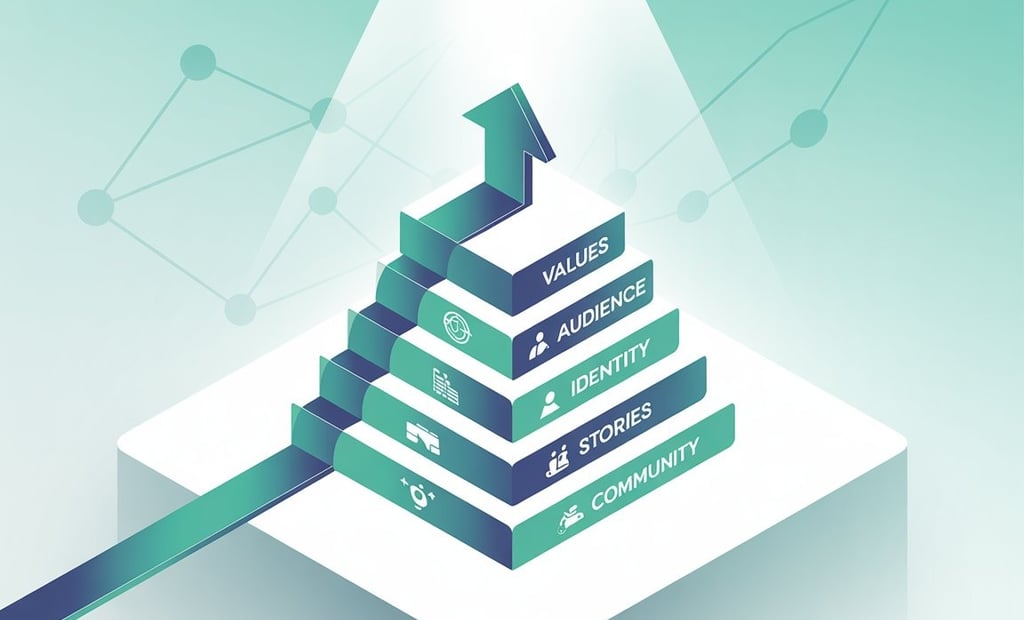🌟 Open to New Opportunities – Let's Build Something Great Together!
Lifestyle Branding
Branding:Discover why customers choose Starbucks over cheaper coffee, Apple over comparable phones, and Nike over generic sneakers. This comprehensive guide reveals the hidden psychology behind purchasing decisions and shows you how to build a brand that customers don't just buy from, they buy into.
BRANDINGMARKETING
Aladdin Tanbakji
6/1/2025


We Don't Buy Products. We Buy a Lifestyle & Idintity: The Psychology of Lifestyle Branding
Picture this: You're standing in line at Starbucks, paying $5 for a latte you could make at home for 50 cents. Your iPhone sits in your pocket, the same device that costs twice as much as competitors with identical features. On your feet? Those $150 Nike sneakers you bought not for the gym, but for the statement they make.
Sound familiar? You're not alone. And you're not irrational either.
The Hidden Truth Behind Every Purchase Decision
Here's what most businesses get wrong: they think they're selling products. But consumers? We're shopping for identity.
That morning Starbucks ritual isn't about caffeine it's about sophistication, productivity, and belonging to a community of people who "treat themselves right." Your iPhone isn't just a communication device, it's a badge that says you value design, innovation, and premium experiences.
This is lifestyle branding in action, and it's revolutionizing how smart companies connect with their audiences.
Why Your Logo Means Nothing (And Everything)
Traditional branding focused on recognition, slap a logo on everything and hope people remember you. Modern branding? It's about emotional architecture.
Your brand isn't what you say it is. It's the feeling people get when they interact with your business. It's the story they tell themselves about who they become when they choose you over everyone else.
In today's marketplace, functionality is the entry fee. Emotion is what wins the game.
The Lifestyle Brand Playbook: What Winners Do Differently
Let's dissect how the masters do it:
Apple cracked the code early. They don't manufacture technology, they manufacture desire. Every product launch feels like a cultural event because they've positioned themselves as the intersection of art and science. Apple customers don't just use iPhones; they participate in a movement toward beautiful, intuitive living.
Nike understood that athletic wear isn't about athletics, it's about potential. Their "Just Do It" campaign doesn't sell shoes; it sells the version of yourself that doesn't make excuses. Every swoosh is a reminder that greatness is a choice, not a gift.
Tesla didn't enter the car business; they entered the future business. Driving a Tesla isn't about transportation; it's about being an early adopter, an environmentalist, a forward-thinker. It's about the satisfaction of knowing your part of the solution.
These brands have mastered the art of selling transformation, not transaction.
The Science Behind Why This Works
Humans are tribal creatures hardwired for belonging. We use products as social signals, shortcuts that communicate our values, aspirations, and group affiliations without saying a word.
When your brand successfully taps into this psychology, something magical happens: price becomes secondary. Customer acquisition costs plummet. Word-of-mouth marketing explodes. You stop competing on features and start competing on feelings.
Your customers become your evangelists because your brand helps them express their ideal selves.
Building Your Lifestyle Brand: The Strategic Framework
1. Discover Your Brand's Soul
Forget what you sell. Focus on why it matters. What transformation do you enable? What better version of themselves can people become through your brand? This isn't about product features, it's about life outcomes.
2. Map Your Tribe's Inner World
Your ideal customers aren't demographic profiles, they're real people with dreams, fears, and daily struggles. What keeps them up at night? What do they aspire to become? How do they want others to see them? Understanding their emotional landscape is your competitive advantage.
3. Craft Your Brand Universe
Every interaction should feel intentional. Your visual identity, tone of voice, customer experience, and even your pricing strategy should work together to create a cohesive world that people want to inhabit. Consistency builds trust; trust builds loyalty.
4. Master the Art of Narrative
Features tell, but stories sell. Share customer transformations. Document your brand's journey. Create content that helps people envision their better life with your brand as a supporting character. Make your audience the hero of the story.
5. Cultivate Community, Not Just Customers
Create spaces where your tribe can connect, both with your brand and each other. User-generated content, brand partnerships, exclusive events, and social media communities turn individual customers into a movement.
Selling Dreams, Not Things
The most successful brands of our time understand a fundamental truth: people don't buy products; they buy better versions of themselves.
When you can authentically connect your business to your customers' aspirations, you transcend the traditional buyer-seller relationship. You become part of their identity. And identity is the strongest form of customer loyalty that exists.
The question isn't whether you can afford to build a lifestyle brand. In today's experience economy, the question is whether you can afford not to.
Your customers are waiting to fall in love with what you represent. Give them something worth believing in.
Frequently asked questions
What exactly is lifestyle branding, and how is it different from regular branding?
Lifestyle branding goes beyond logos and slogans, it's about connecting your product or service to your customers' identity and aspirations. While traditional branding focuses on recognition and features, lifestyle branding taps into emotions, values, and the desire for self-expression. Instead of selling what your product does, you're selling who your customer becomes when they choose you.
Is lifestyle branding only for big companies like Apple and Nike?
Absolutely not! Small businesses often have an advantage in lifestyle branding because they can be more authentic and personal. Local coffee shops, boutique fitness studios, handmade jewelry brands, and even service providers like photographers or consultants can successfully build lifestyle brands. The key is understanding your audience's values and consistently delivering experiences that align with their desired identity.
How long does it take to build a lifestyle brand?
Building authentic brand recognition takes time—typically 1-3 years to see significant results. However, you can start implementing lifestyle branding strategies immediately. The key is consistency across all touchpoints and patience as your community grows. Remember, you're building relationships, not just making sales.
Do I need a big budget to create a lifestyle brand?
No! While having resources helps, lifestyle branding is more about strategy and consistency than expensive campaigns. Focus on understanding your audience deeply, creating authentic content, and delivering consistent experiences. Social media, user-generated content, and word-of-mouth marketing can be incredibly effective and cost-efficient for building lifestyle brands.
Can I apply lifestyle branding to B2B businesses?
Yes! B2B lifestyle branding focuses on professional identity and business values. For example, Slack brands itself around modern, collaborative work culture, while HubSpot represents the inbound marketing movement. Consider what professional identity your B2B customers want to embody and how your brand can support that vision.
Get in touch
Let’s exchange thoughts and ideas! Feel free to leave a comment or send me a message with your feedback on the blog.
More to read
Insights
Explore business management and marketing expertise today.
Connect
info@aladdintanbakji.com
0046 739 286 213
Aladdin Tanbakji © 2025. All rights reserved.


